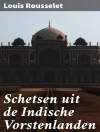In ‘A Journey through Persia, Armenia, and Asia Minor, to Constantinople, in the Years 1808 and 1809, ‘ James Justinian Morier offers a vivid and meticulously detailed account of his travels across the Middle East. Written in a narrative style characterized by keen observation and rich descriptions, this travelogue positions Morier among the early great chroniclers of the region’s sociopolitical fabric. Set against the backdrop of early 19th-century imperial interest in the East, the book reflects the European fascination with exotic cultures and landscapes while serving as a critical commentary on the geopolitical dynamics of the era. Morier, a British diplomat and writer, was well-acquainted with Persian culture and politics, having spent several years in Iran. His experience as a consul allowed him a unique vantage point to articulate not only the beauty of these regions but also the complex interactions between diverse peoples and nations. This firsthand perspective informs the authenticity of his observations, enriching the text with personal anecdotes and a profound understanding of the local customs and traditions. Readers interested in historical travel literature will find Morier’s narrative an indispensable resource. His eloquent prose invites exploration and offers an in-depth understanding of the landscapes, cultures, and tensions of early 19th-century Persia and its neighboring territories. This book is not merely a travelogue but a scholarly contribution that remains relevant for both historians and casual readers alike.
Sobre el autor
James Justinian Morier (1780–1849) was an esteemed British diplomat and author, best known for his insightful travel writing and for creating enduring contributions to the English literature on the Near East. Born in the Ottoman Empire’s city of Smyrna (now Izmir, Turkey) to an English Levant Company merchant, Morier’s cosmopolitan upbringing paved the way for a life of cross-cultural exploration. His most notable work, ‘A Journey through Persia, Armenia, and Asia Minor, to Constantinople, in the Years 1808 and 1809’, provides readers with vivid descriptions of the landscapes, customs, and politics of the early 19th-century Middle East, offering a window into a world that was largely unknown to his contemporaries. Morier’s literary style combines meticulous observation with a flair for storytelling, effectively bridging the gap between travel literature and narrative adventure. In addition to his travelogues, Morier is also celebrated for his later fictional works, most notably ‘The Adventures of Hajji Baba of Ispahan’, which satirized Persian society and European perceptions of the Orient. His works remain a valuable resource for historians and literary scholars, offering both an engaging narrative experience and a historical account of his era’s cultural and diplomatic encounters between the East and West.












